
South Korea
Gyeongju and its vicinity![[Unesco]](/images/unesco-logo.gif)
Gyeongju, the ancient capital of the kingdom of Silla, is a rich archaeological city,
this why it is listed by Unesco as a world heritage site. The Seokguram grotto and the temple Bulguksa, outside the town, are also listed as world heritage by Unesco. But Gyeongju has other
assets : there are a lot of mountains nearby and the town is not far from the sea.
![]() The three kingdoms
The three kingdoms
From the 1st century B.C. to the 7th century A.D. the Korean peninsula was divided into three kingdoms : Goguryeo in the north, Baekje in the west and Silla in the east. There is also a 4th kingdom, Gaya, absorbed by Silla in the 6th century. It is also Silla that unified the country by the conquest of Baekje and a part of Goguryeo and then expelled the Chinese in 676. This kingdom lasted until 935.
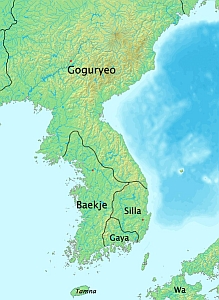
free source : wikimedia commons
Gyeongju
Like all cities of Korea, Gyeongju has its mascots found in several places.
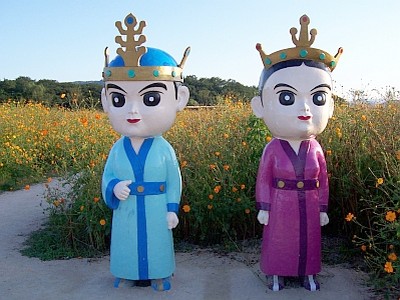
In the backgroung of the photo above, there is a field of cosmos. There are also a little further hibiscus (hibiscus is the national flower).
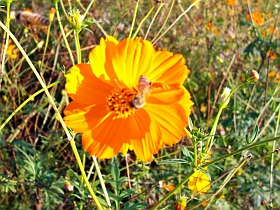
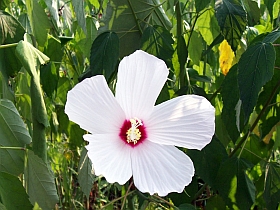
Tumulus
There are several tumulus in Gyeongju. These burial mounds are mostly royal tombs of the Silla era.
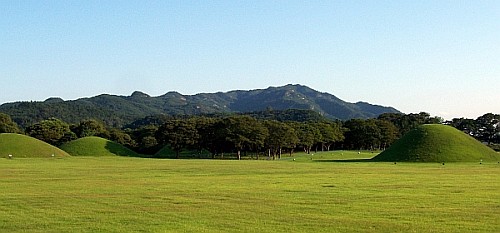
Only one is open to visitors (Cheonmachong tomb). It is located in a park. Kings and queens were arranged with their treasures in a burial chamber covered with logs. The whole was then covered with stones to form the mound. See picture of national museum.
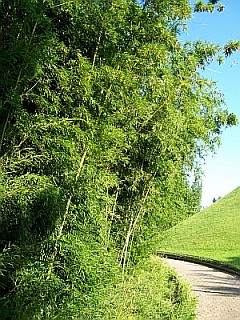
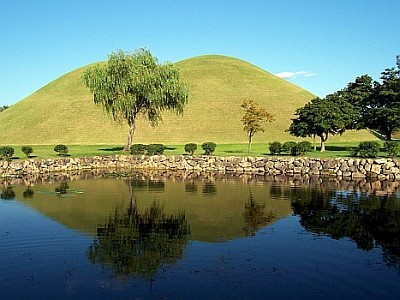
The observatory Cheomseongdae
It would be the oldest observatory southeast Asia, built in the 7th century. Its square base represents the 4 seasons. It consists of 12 stones which symbolize the 12 months of the year. The tower is composed of 365 blocks of stone, one for each day of the year. It also has 28 levels, one for each day of lunar month.
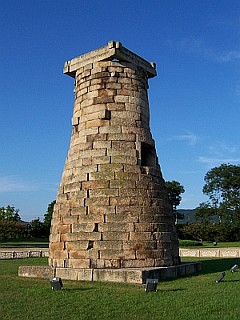
Punhwangsa
The three-storey stupa Punhwangsa is the oldest datable Korea stupa (early 7th century). It was 9-storey at the origin. There are statues of lions (guards) in the 4 corners. On each side there are bas-reliefs of guardians (on stone doors).
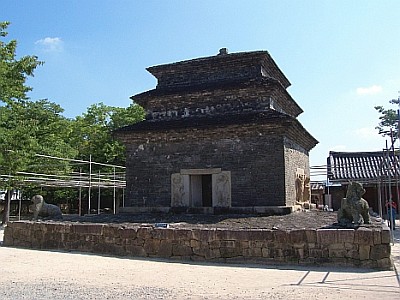
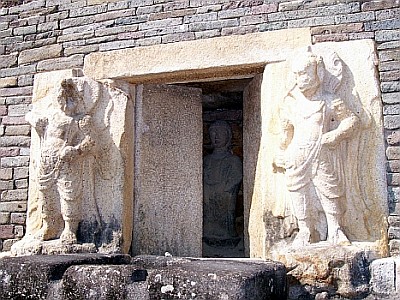
The stupa is accompanied by a small temple which was one of the largest in Gyeongju in the 7th century.
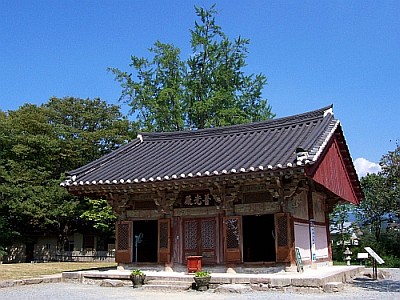
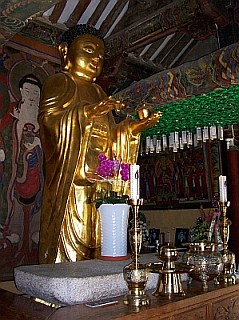
Anapji pond
It was the site of a former great palace but unfortunately with no remains except a few pavilions and the charming pond. In the 7th century, 3 pools were decorated with 12 artificial mountains and thus looked like islands of the Taoist paradise.
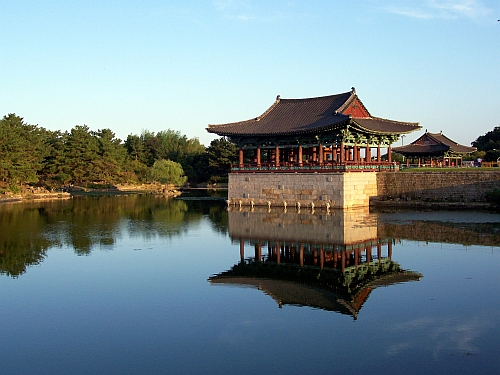
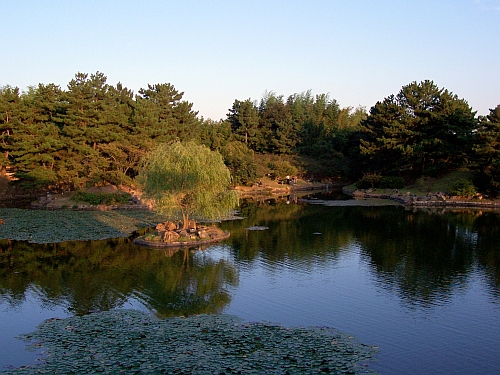
National museum
It is a very interesting museum and the largest after the one of Seoul.
Near the entrance, there is the bell of King Seongdeok called Emille, with its terrible legend that says "in order to have the bell made a good sound, a young child was precipitated in the molten bronze. When the bell rang for the first time, the voice of the child was heard calling his mother, Emille in ancient Korean "... A little further, there is a reproduction of a stupa of Bulguksa temple.
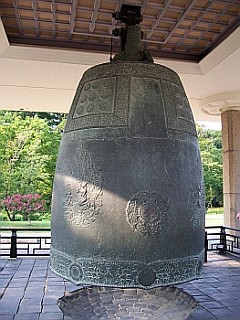
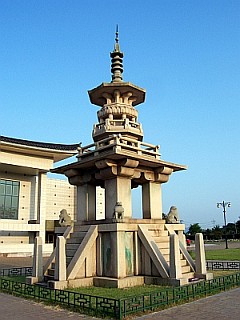
Among the treasures of the museum, there are jewels in the form of "commas" : magatama, a golden crown, ...
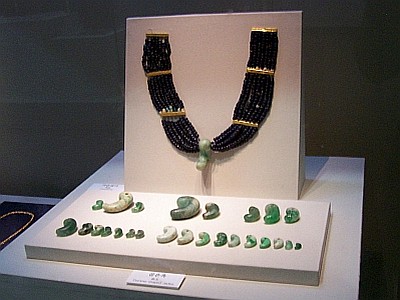
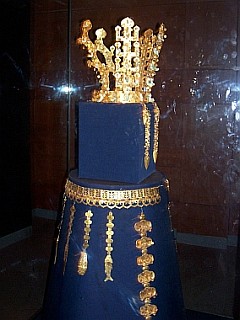
a model of the inside of a grave from Silla, a model of ancient kilns, and more...
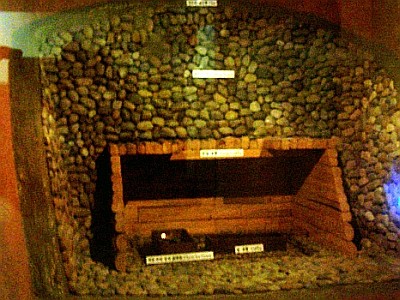
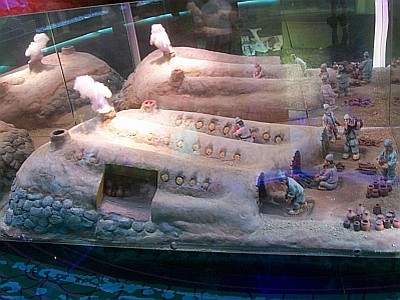
Others
There are still many things to see :
-
Lake and amusement park
-
Mount Namsan with temples, bas-reliefs of Buddhas... and below reproduction of statues, the one of Seokguram grotto and the one of the spirit of the mountain (a shamanistic figure and also by syncretism a figure of Korean Buddhism).
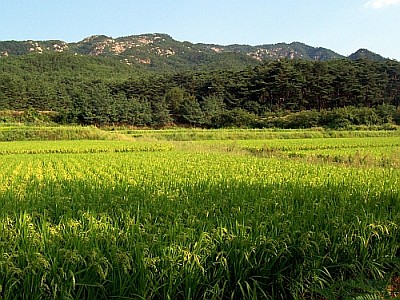
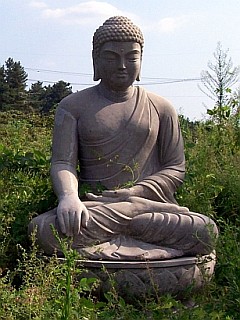
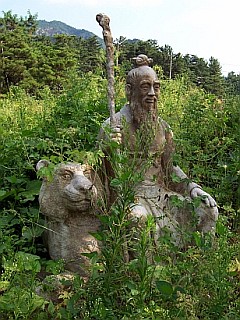
Bulguksa temple
This temple of the 6th century is classified by Unesco. Its stairs with arcades are unique in a Korean temple.
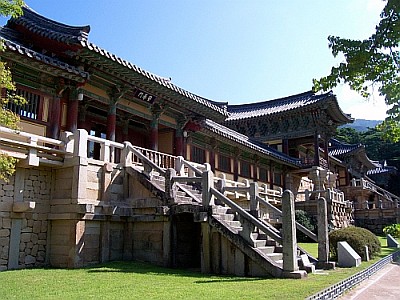
Seokguram grotto
It's not really a grotto but a passage in the rock in which a statue of Buddha Sakyamuni was set. This is probably the best known in the country and it is often found on tourist brochures. Moreover, the whole grotto (statue and bas-reliefs of the guardians) is classified by Unesco. Note that for several observers, especially because of what emerges from it, there is the most beautiful statue of Buddha in the world...
Unfortunately taking pictures is forbidden. A little further up the page you can see a reproduction of the statue in the surroundings of Gyeongju.
Manbulsa temple, the temple of the 10,000 Buddhas
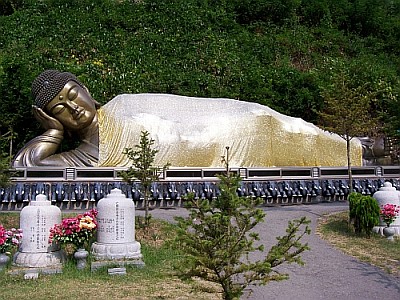
After seeing recent pictures of this temple (opened in 2006) located approximately 30 km (18.6 miles) from Gyeongju I decided to go there (by bus and taxi). It is located away from homes, so better think how going back (it is better to call a taxi so get the phone number of the taxi that drop you off or ask the warden). It is a temple cemetery with a statue of a reclining Buddha ready to come in Parinirvana. It is different from other Korean temples because of its color and its disposal. Perhaps it prefigures new temples.
More info on their very good website : http://www.manbulsa.org/global_site/english/index.asp.
